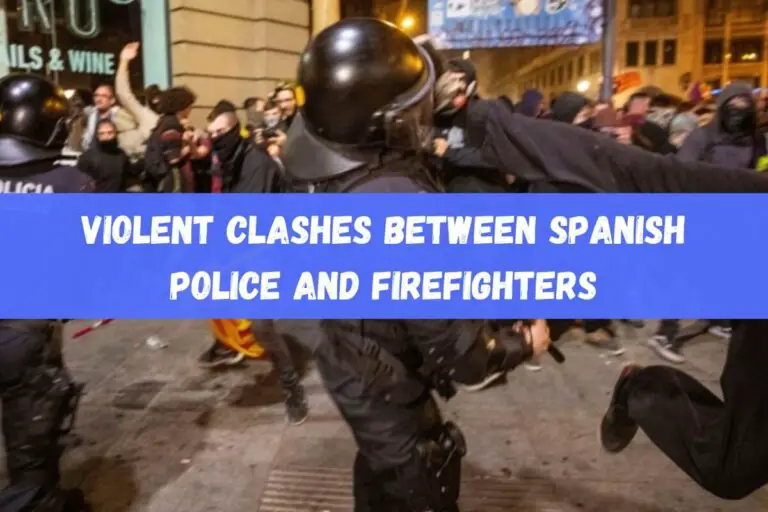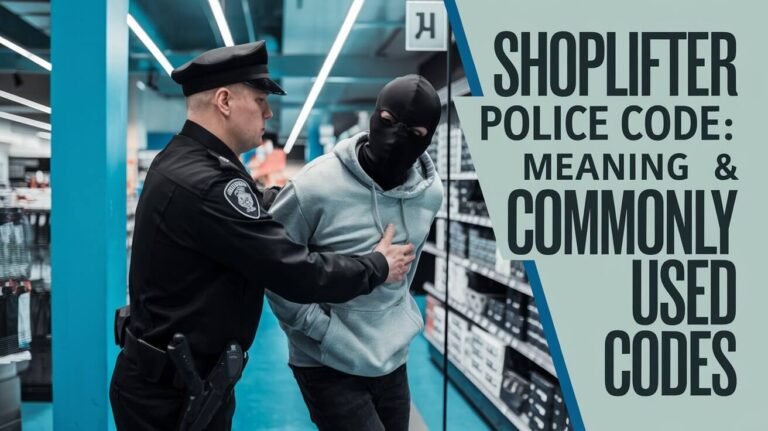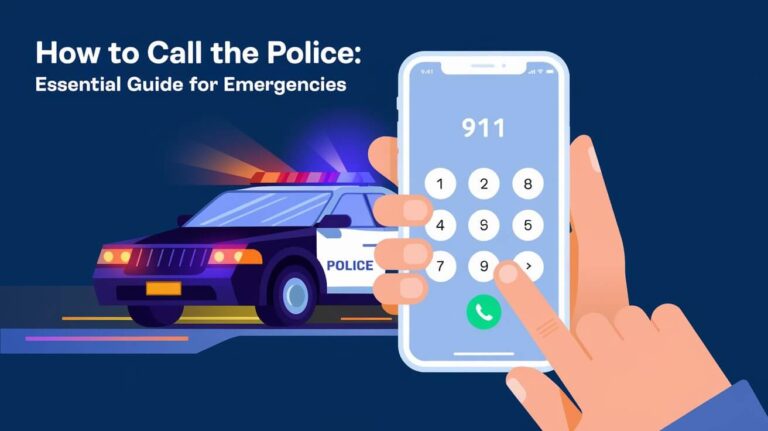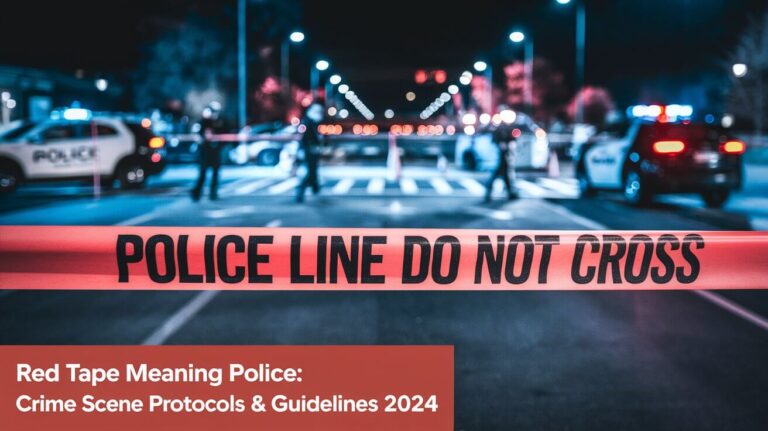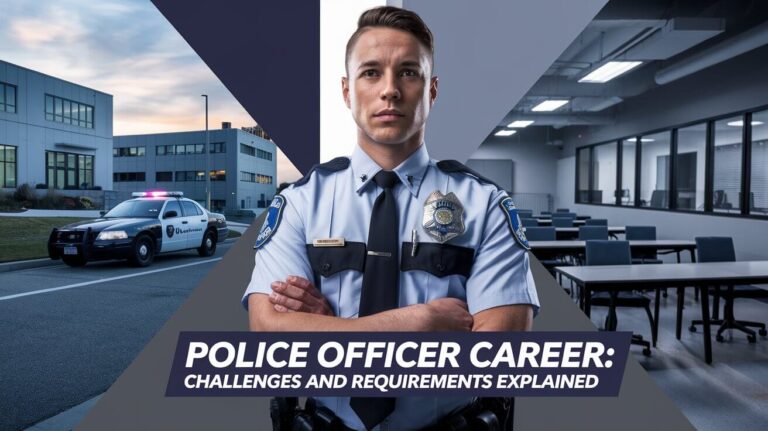Police vs Military: Key Differences and Roles Explained
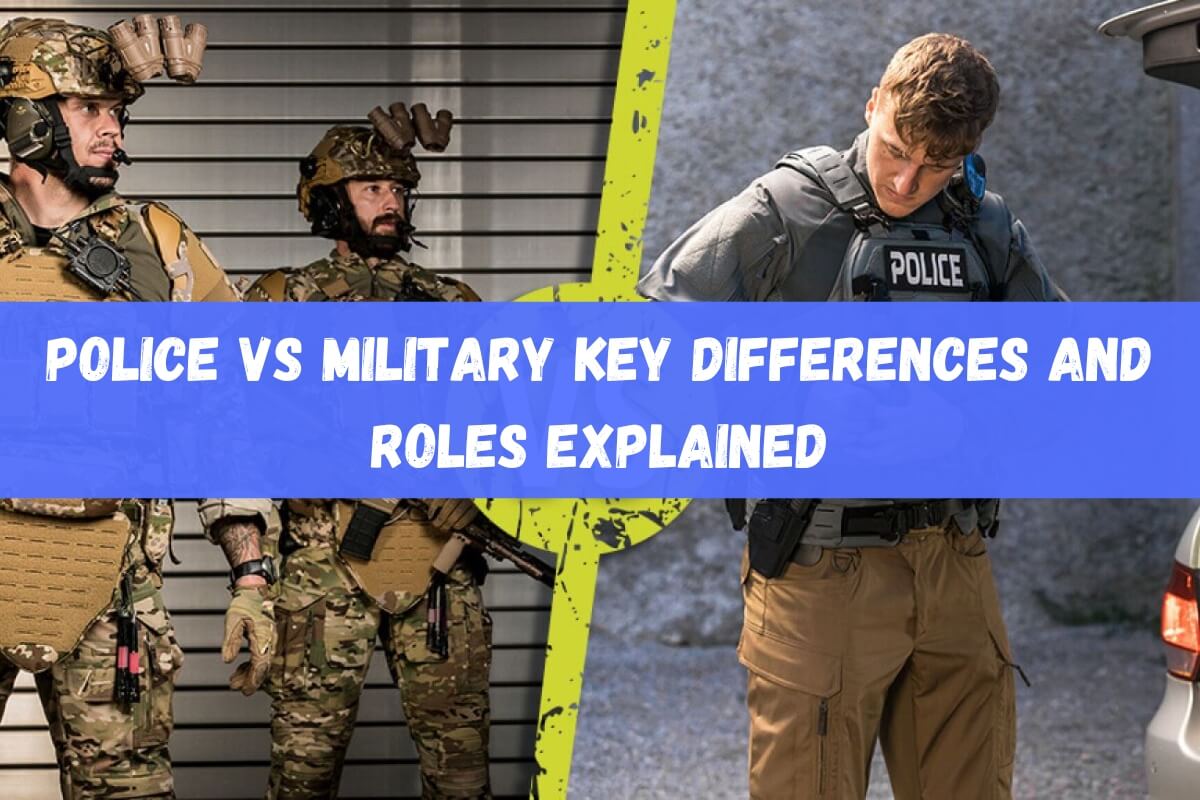
Law enforcement plays a crucial role in maintaining order, upholding laws, and ensuring public safety within communities. While the terms “police” and “military” are often used interchangeably, there are distinct differences between these two entities. Whether you’re a civilian curious about their contrasting roles or someone exploring career paths, understanding the intricacies of police versus military is essential.
This guide examines the differences between police and military forces, covering their purposes, training, jurisdictions, and responsibilities. It offers an understanding of how these two operate and their roles in society.
To kick things off, let’s start by addressing the fundamental question:
What is the primary difference between the police and the military?
The main distinction lies in their core purposes. Police forces are responsible for maintaining law and order within civilian populations, while military forces are tasked with national defense and warfare operations.
As we delve further into this topic, we’ll cover various aspects, including:
- Roles and jurisdictions of police vs military
- Training and educational requirements
- Use of force and rules of engagement
- Organizational structures and hierarchies
- Daily operations and duties
- Legal authorities and limitations
- Public perception and community relations
Whether you’re seeking a career in law enforcement, have a general interest in these fields, or simply want to broaden your knowledge, this guide will provide you with a comprehensive understanding of the police versus military dynamic.
Roles and Jurisdictions
One of the most significant differences between the police and the military lies in their roles and jurisdictions. While both entities are tasked with maintaining order and ensuring safety, their scopes and areas of operation differ substantially.
Police
The primary role of police forces is to enforce laws and maintain public order within civilian communities. Their jurisdiction is typically limited to a specific geographic area, such as a city, county, or state. Police officers have the authority to arrest individuals suspected of committing crimes, issue citations, and respond to emergencies within their designated jurisdictions.
Police departments are responsible for a wide range of duties, including:
- Patrolling neighborhoods and responding to calls for service
- Investigating crimes and gathering evidence
- Conducting traffic enforcement and accident investigations
- Providing community outreach and education programs
- Collaborating with other law enforcement agencies and emergency services
Military
In contrast, the military’s primary role is to defend the nation’s interests, both domestically and abroad. Military forces are tasked with protecting the country’s sovereignty, deterring and responding to external threats, and engaging in combat operations when necessary.
The jurisdiction of military forces extends beyond national borders, as they can be deployed to various regions around the world to carry out missions and operations. Unlike police officers, military personnel are not typically responsible for enforcing civilian laws within their own country, except in specific circumstances such as martial law or natural disasters.
Some of the key responsibilities of military forces include:
- Conducting combat operations and engaging enemy forces
- Providing humanitarian aid and disaster relief efforts
- Protecting strategic assets and ensuring national security
- Gathering intelligence and conducting surveillance activities
- Participating in peacekeeping and stabilization missions
Police and military roles may seem separate, but their duties can intersect during crises or when supporting civil authorities.
Training and Educational Requirements
The training and educational requirements for police officers and military personnel differ significantly, reflecting the distinct nature of their roles and responsibilities.
Police Training
To become a police officer, individuals typically undergo extensive training programs that cover various aspects of law enforcement. The specific requirements may vary depending on the jurisdiction, but generally, prospective police officers must complete the following:
- Basic Training Academy: This involves a comprehensive curriculum that covers topics such as constitutional law, criminal law, defensive tactics, firearms training, emergency vehicle operations, and report writing.
- Field Training Program: After completing the academy, new officers are assigned to experienced field training officers for on-the-job training. This hands-on experience allows them to apply their knowledge in real-life scenarios under the guidance of seasoned professionals.
- Continuing Education: Police officers are typically required to participate in ongoing training and professional development courses throughout their careers. These courses cover updates in laws, new techniques, and specialized areas of law enforcement.
In addition to the training requirements, many police departments prefer or require candidates to have at least an associate’s or bachelor’s degree, often in fields such as criminal justice, law enforcement, or a related discipline.
Military Training
The training process for military personnel is considerably different and more comprehensive, as it encompasses various aspects beyond law enforcement duties.
- Basic Training: All recruits, regardless of their intended military occupational specialty, must complete basic training. This intensive program focuses on physical conditioning, military discipline, and the fundamental skills required for military service.
- Advanced Individual Training (AIT): After basic training, soldiers receive specialized training based on their chosen career field, such as infantry, aviation, or military police.
- Ongoing Training and Education: Military personnel are required to participate in continuous training programs throughout their careers. These programs ensure they remain proficient in their duties and stay up-to-date with the latest tactics, equipment, and technologies.
Unlike police officers, military personnel are not typically required to have a college degree upon enlistment. However, many career advancement opportunities within the military may require higher education or specialized training.
Police and military personnel receive extensive training in areas like firearms handling, defensive tactics, and crisis response, enabling them to perform their duties effectively.
Use of Force and Rules of Engagement
The use of force and rules of engagement are critical aspects that differentiate police and military operations. These guidelines dictate the circumstances under which force can be employed and the appropriate levels of force to be used.
Police Use of Force
Police officers are trained to use force as a last resort and only when necessary to protect themselves or others from harm, or to effect a lawful arrest. The use of force by police officers is governed by strict policies and procedures, which are based on legal principles and guidelines.
The levels of force used by police officers typically range from verbal commands and physical restraint techniques to the use of non-lethal weapons (e.g., tasers, pepper spray) and, in extreme circumstances, lethal force (firearms). However, the use of lethal force is subject to stringent rules and is only permitted when there is an imminent threat to life.
Military Rules of Engagement
Military personnel operates under a different set of rules known as the Rules of Engagement (ROE). These rules are specific to each mission or operation and are designed to guide the appropriate use of force while minimizing civilian casualties and collateral damage.
The ROE may vary depending on the nature of the operation, the threat level, and the operational environment. In general, military personnel are authorized to use force for self-defense, to defend others, and to accomplish their assigned missions.
Unlike police officers, military personnel may be authorized to employ a higher level of force, including lethal force, in certain operational scenarios. However, this use of force is strictly regulated and must comply with the established ROE, as well as international laws and treaties governing armed conflicts.
Police and military forces are trained to use force only when necessary and proportionate to the situation. They are accountable for their actions and face investigations and discipline if they use excessive or unjustified force.
Organizational Structures and Hierarchies
The organizational structures and hierarchies of police and military forces are distinct, reflecting their different roles, responsibilities, and operational requirements.
Police Organizational Structure
Police departments typically have a hierarchical structure that is divided into various ranks and divisions. The specific ranks and divisions may vary depending on the size and jurisdiction of the department, but generally, the hierarchy includes the following:
- Chief of Police: The highest-ranking officer in the department, responsible for overall leadership, policy development, and strategic planning.
- Command Staff: This includes ranks such as deputy chief, assistant chief, and captain, who oversee specific divisions or operations within the department.
- Supervisory Ranks: Sergeants and lieutenants are responsible for supervising and managing the day-to-day operations of patrol officers and detectives.
- Line Officers: Patrol officers and detectives are the front-line personnel responsible for enforcing laws, responding to calls for service, and conducting investigations.
Police departments may also have specialized units or divisions dedicated to specific functions, such as traffic enforcement, crime scene investigations, narcotics units, and community policing initiatives.
Military Organizational Structure
The military’s organizational structure is highly structured and hierarchical, with a clear chain of command and well-defined ranks and roles. The structure varies slightly across different branches (e.g., Army, Navy, Air Force, Marines), but generally follows a similar pattern:
- Top Leadership: The highest-ranking officials, such as the Secretary of Defense, Joint Chiefs of Staff, and service branch chiefs (e.g., Chief of Staff of the Army, Chief of Naval Operations), are responsible for setting policies, strategies, and overseeing operations.
- Officer Corps: Officers hold positions of leadership and command, ranging from entry-level ranks like second lieutenant or ensign up to flag officer ranks like general or admiral. Officers receive extensive leadership and management training and are responsible for leading and directing military personnel and operations.
- Enlisted Ranks: Enlisted personnel make up the bulk of the military’s workforce and carry out the day-to-day tasks and missions. Enlisted ranks range from entry-level privates or airmen up to senior non-commissioned officers like sergeant majors or master chief petty officers. They receive specialized training in various occupational specialties and play a crucial role in the execution of military operations.
- Special Operations Forces: Elite units like the Army Rangers, Navy SEALs, and Air Force Special Operations are highly trained and equipped to conduct specialized missions, including counterterrorism, direct action, and special reconnaissance.
The military’s hierarchical structure promotes clear lines of authority, discipline, and accountability, which are essential for effective command and control in complex and often high-risk operations.
Daily Operations and Duties
The daily operations and duties of police officers and military personnel differ significantly, reflecting their distinct roles and responsibilities within their respective organizations.
Police Daily Operations
Police officers’ daily duties typically involve:
- Patrol Duties: A significant portion of a police officer’s shift is dedicated to patrolling assigned areas, responding to calls for service, and maintaining a visible presence in the community.
- Incident Response: Officers must be prepared to respond to a wide range of incidents, including crimes in progress, traffic accidents, domestic disputes, and other emergencies.
- Investigations: Detectives and investigators are responsible for gathering evidence, interviewing witnesses, and conducting follow-up investigations related to criminal cases.
- Report Writing: Police officers are required to document their activities and interactions through detailed report writing, which serves as official records and supports legal proceedings.
- Community Engagement: Many police departments emphasize community policing strategies, where officers interact with residents, attend community meetings, and participate in outreach programs to build trust and establish positive relationships.
Military Daily Operations
The daily operations and duties of military personnel can vary significantly based on their specific roles, assignments, and operational environments. However, some common duties include:
- Training and Readiness: A significant portion of a service member’s time is dedicated to training and maintaining operational readiness. This includes physical fitness, weapons proficiency, and scenario-based exercises to hone their skills and preparedness.
- Operational Deployments: When deployed to various locations around the world, military personnel carry out missions and operations related to combat, peacekeeping, humanitarian assistance, or other assigned tasks.
- Base Operations and Support: Service members stationed at military installations may be responsible for base security, logistics, transportation, maintenance, and other support functions essential for the base’s operations.
- Administrative and Leadership Duties: Officers and senior non-commissioned officers often have additional responsibilities related to personnel management, training oversight, strategic planning, and other administrative tasks.
Both police and military personnel may also be called upon to assist in emergency or disaster response situations, either within their respective communities or as part of larger-scale relief efforts.
Legal Authorities and Limitations
The legal authorities and limitations governing police and military personnel are distinct, reflecting the different roles and jurisdictions they operate within.
Police Legal Authorities and Limitations
Police officers derive their legal authority from state and local laws, as well as federal statutes. Their powers and limitations are typically outlined in the following:
- State and Local Laws: These laws define the scope of a police officer’s authority, including the power to arrest, search, and seize evidence, and use reasonable force in the line of duty.
- Constitutional Protections: Police actions are subject to constitutional limitations, such as the Fourth Amendment’s protection against unreasonable searches and seizures, and the Fifth Amendment’s guarantee of due process.
- Departmental Policies and Procedures: Each police department has its own set of policies and procedures that officers must follow, covering areas such as use of force, pursuit policies, and evidence handling.
- Citizen Oversight and Accountability: Police departments are often subject to oversight from civilian review boards, internal affairs divisions, and other accountability mechanisms to ensure transparency and address potential misconduct.
Military Legal Authorities and Limitations
The legal framework governing military personnel is primarily derived from the following sources:
- Uniform Code of Military Justice (UCMJ): The UCMJ is the foundation of military law and justice, outlining offenses, court-martial procedures, and disciplinary actions for service members.
- Rules of Engagement (ROE): As discussed earlier, the ROE provides specific guidelines on the use of force and the circumstances under which military personnel can engage hostile forces or threats.
- International Laws and Treaties: Military operations, particularly in combat zones or during international deployments, must adhere to relevant international laws and treaties, such as the Geneva Conventions and the laws of armed conflict.
- Military Orders and Directives: Service members are bound by orders and directives issued by their chain of command, which can further define their operational parameters and limitations.
Military personnel have broader authority in certain operational contexts, but they are still accountable to civilian oversight and subject to military courts and investigative bodies.
Public Perception and Community Relations
The public perception and community relations of police and military forces can have a significant impact on their effectiveness and the trust they receive from the populations they serve.
Police and Community Relations
Police departments have placed a growing emphasis on community policing strategies and efforts to build positive relationships with the communities they serve. This involves:
- Community Engagement: Police officers participate in neighborhood meetings, attend community events, and collaborate with local organizations to better understand the needs and concerns of residents.
- Transparency and Accountability: Many departments have implemented measures to increase transparency, such as body-worn cameras, civilian review boards, and robust complaint processes, to foster trust and accountability.
- Diversity and Cultural Awareness: Efforts are made to recruit officers who reflect the diversity of the communities they serve and provide training on cultural sensitivity and implicit bias.
- Problem-Solving Approach: Police departments increasingly adopt a problem-solving approach to address community issues, focusing on partnerships, prevention, and long-term solutions rather than solely relying on enforcement.
Effective community relations can enhance public trust, facilitate cooperation, and ultimately support the police’s ability to maintain public safety and order.
Military and Public Perception
The public perception of military forces can vary depending on the context and the nature of their operations. In general, the military enjoys a relatively positive public perception, particularly in times of national security threats or during humanitarian relief efforts.
However, public perception can be influenced by factors such as:
- Operational Conduct: The conduct of military personnel during combat operations or deployments can shape public opinion, particularly in cases of civilian casualties or alleged misconduct.
- Transparency and Accountability: Efforts to promote transparency and accountability in military operations can enhance public trust and confidence.
- Recruitment and Representation: The diversity and inclusiveness of the military, as well as its recruitment and retention efforts, can impact public perception among different communities.
- Veteran Support and Care: Public perception can be influenced by the level of support and care provided to military veterans and their families.
Maintaining positive public perception is essential for the military, as it can impact recruitment, funding, and public support for military operations and initiatives.
Conclusion
We’ve explored the key differences between police and military forces, including their roles, training, organization, and operations. Both play crucial roles in maintaining order and safety, but their approaches, jurisdictions, and legal authorities differ significantly.
Police officers are primarily focused on enforcing laws and maintaining public order within civilian communities, while military personnel are tasked with national defense, combat operations, and supporting various missions both domestically and abroad.
From their training and educational requirements to their use of force policies and organizational hierarchies, the contrasts between these two entities are evident. Moreover, their daily operations, legal authorities, and public perception further highlight the unique challenges and responsibilities they face.
It is crucial to recognize and appreciate the distinct roles and contributions of both police and military forces in protecting our communities and safeguarding our nation’s interests. By fostering a deeper understanding of their distinctions, we can better support and collaborate with these essential entities, ensuring they can effectively carry out their respective duties while upholding the principles of justice, security, and human rights.

